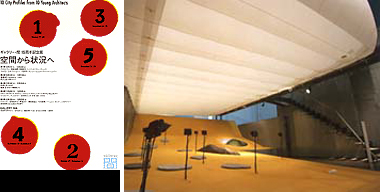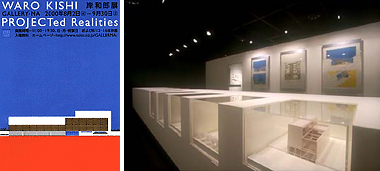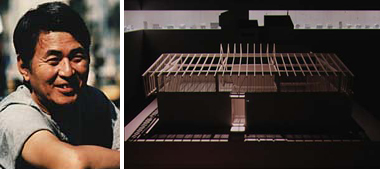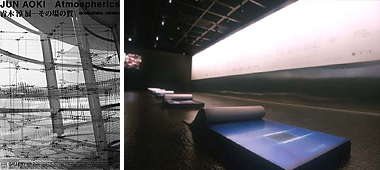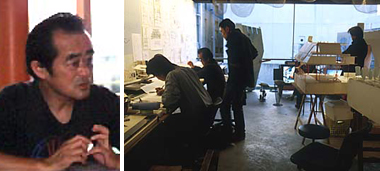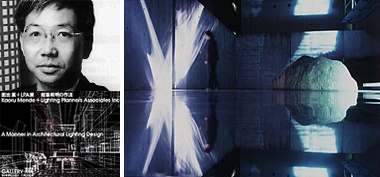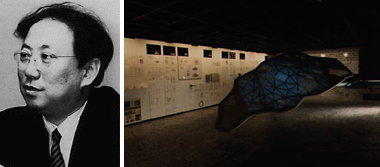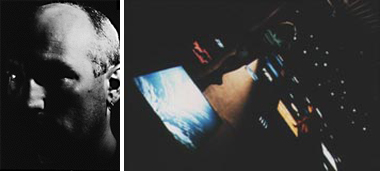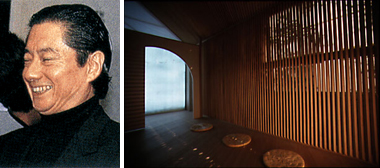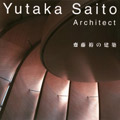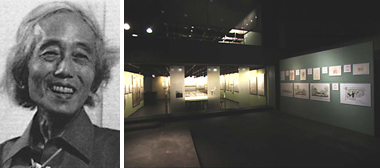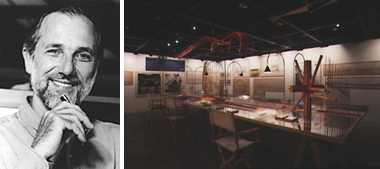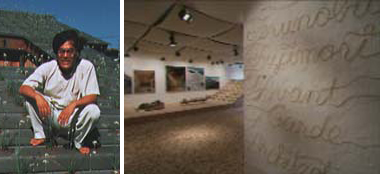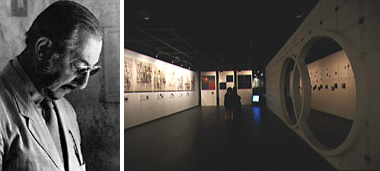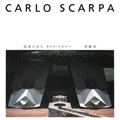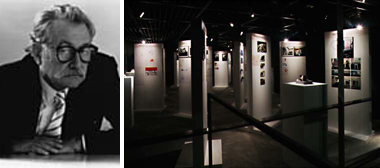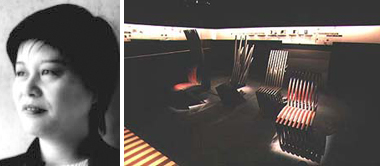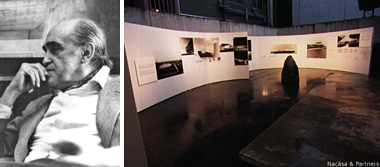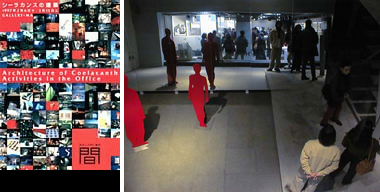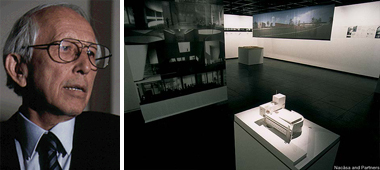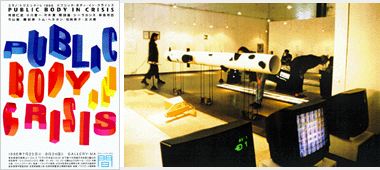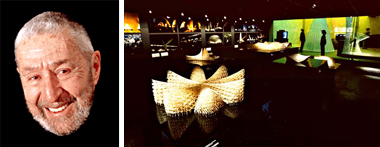- ExhibitionsTOTO GALLERY·MA
- Upcoming Exhibitions
- Past Exhibitions
- ExhibitionsExternal Locations
- Upcoming Exhibitions
- Past Exhibitions
- Lectures
- Upcoming Lectures
- Past Lectures
- Visitor Information
- Directions
- Gallery Infomation
- Museum Shop
- Bookshop TOTO
Cultural Activities
TOTO GALLERY·MA
TOTO Publishing
Bookshop TOTO
Past Exhibitions
October 17―December 23, 2000
Direction: Hitoshi Abe, Taro Igarashi, Masashi Sogabe, Manabu Chiba
1st: Void | Oct. 17–28, 2000
Atelier Bow-Wow/Yoshiharu Tsukamoto+Momoyo Kaijima: Pet Architecture Project
Facter N Associates/Manabu Chiba+Nancy Finley: Renewal of “Urban Void”
2nd: Atmosphere | Oct. 31–Nov. 11, 2000
Shuhei Endo: Rooftecture/BUNYUUTAI
Ryue Nishizawa: Atmosphere
3rd: Agglomeration | Nov.14–25, 2000
Hitoshi Abe+Yasuaki Onoda: 10,000
Katsu Umebayashi: Reconsidering the pooblemations of housing
4th: Hybrid | Nov. 28–Dec. 9, 2000
Klein Dytham architecture/Astrid Klein+Mark Dytham: DELUXE TOWER
Matsuoka Wang Architects/Kyoko Matsuoka+Steven Tachun Wang: LINE→STAIN
5th: Geography | Dec. 12–23, 2000
MIKAN/Kiwako Kamo+Yosuke Kumakura+Masashi Sogabe+Masayoshi Takeuchi+Manuel Tardits: City Golf
Katsuhiro Miyamoto: dis-location
1st: Void | Oct. 17–28, 2000
Atelier Bow-Wow/Yoshiharu Tsukamoto+Momoyo Kaijima: Pet Architecture Project
Facter N Associates/Manabu Chiba+Nancy Finley: Renewal of “Urban Void”
2nd: Atmosphere | Oct. 31–Nov. 11, 2000
Shuhei Endo: Rooftecture/BUNYUUTAI
Ryue Nishizawa: Atmosphere
3rd: Agglomeration | Nov.14–25, 2000
Hitoshi Abe+Yasuaki Onoda: 10,000
Katsu Umebayashi: Reconsidering the pooblemations of housing
4th: Hybrid | Nov. 28–Dec. 9, 2000
Klein Dytham architecture/Astrid Klein+Mark Dytham: DELUXE TOWER
Matsuoka Wang Architects/Kyoko Matsuoka+Steven Tachun Wang: LINE→STAIN
5th: Geography | Dec. 12–23, 2000
MIKAN/Kiwako Kamo+Yosuke Kumakura+Masashi Sogabe+Masayoshi Takeuchi+Manuel Tardits: City Golf
Katsuhiro Miyamoto: dis-location
Architects born in the 1960s came to the forefront of the architectural scene in the period following the bursting of Japan’s bubble economy in the 1990s. Since then, they have been demonstrating original methods of design and styles of activites. This exhibition presents a surging architectural wave raised concurrently by 10 units of young architects.—Taro Igarashi
August 2―September 30, 2000
Exhibitor: Waro Kishi
Architecture does indeed have a certain dimension that is expressible in a gallery, that is, an aspect that can be expressed on an abstract level. That is why we have the exhibition format in the first plece. However, architecture has another aspect grounded in reality. In coming into being, architecture responds to diverse conditions; e.g. site, society, economy and culture.—Waro Kishi
May 20―July 15, 2000
Direction: Makoto Ueda, Hiroshi Naito, Yoshifumi Nakamura, Kenichi Yamazaki
This exhibition focuses on Miyawaki’s housing projects, which were always the center of his prolific activity, and exhibits eight representative works including “Matsukawa Box”, “Funabashi Box”, and “Blue Box”.
March 3―April 28, 2000
Exhibitor: Jun Aoki
I’m interested in composition. But I don’t wish to design actual buildings for the sake of “expressing” the composition. I’m interested in structure. But I don’t wish to express structure.—Jun Aoki
December 4, 1999―February 19, 2000
Phase 1: Dec. 4–22, 1999 | Recreation
Phase 2: Jan. 11–29, 2000 | Movement
Phase 3: Feb. 1–19, 2000 | Chaos
Exhibitor: Osamu Ishiyama
Phase 2: Jan. 11–29, 2000 | Movement
Phase 3: Feb. 1–19, 2000 | Chaos
Exhibitor: Osamu Ishiyama
“Open Technology”, the underlying theme of the exhibiton, is, simply put, the idea that a new world is out there. We can catch a glimpse of that world if we examine the implications of gardening, a currently fashionable pastime. If we can think about and create our own garden, then why can’t we think about and create our own environments?—Osamu Ishiyama
September 25―November 20, 1999
Exhibitor: Kaoru Mende
“Manners” are necessary to lay the trap of comfortable air using light. We learn manners in architectural lighting design from nature, from historical architecture and from the techniques of great architects. Through this exhibition I decided to fully disclose the limitlessly liberal creative energy of lighting design and the somewhat more limited but profound craftsmanship of light.—Kaoru Mende
July 2―September 4, 1999
Exhibitor: Chiaki Arai
“Architecture for arousing”, that is, architecture that rouses or inspirits, must be part of a larger cultural activity prior to and after cnstruction. It is necessary to lift people’s spirits, that is, to make people feel that the building is their own.
March 5―April 24, 1999
Exhibitor: Shigeru Ban
The Japanese Pavilion for the World Exposition Expo 2000 Hannover, Germany, is my current project. Here, we introduce various attempts made during the design and construction processes, including some new developments mainly for the Japanese Pavilion, Expo 2000 Hannover and some other ongoing projects.—Shigeru Ban
December 5, 1998―February 20, 1999
Exhibitor: Yann Kersalé
Yann Kersalé, a French artist, forcuses on light in his art and design projects. In this exhibition, the space is divided into three zones. Each of them represents, “past”, “present”, and “future”, and creates pageants of light along these themes.
September 19―November 14, 1998
Exhibitor: Yutaka Saito
There are wonderful sections that speak eloquently of space. My desire has long been to create works of architecture in which such sections appear. In this exhibition, I am presenting in plan and three-dimensional form a number of sections I have conceived.—Yutaka Saito
July 10―August 1, 1998
Fumitaka Nishizawa, the second head of Sakakura Associates, was a well-known architect who left behind many works. In addition to his activities as an architect, Nishizawa was also deeply interested in the relationship between traditional Japanese architecture and gardens.—Keisuke Fujii
April 25―June 27, 1998
Exhibitor: Renzo Piano
This exhibition is the Japanese stage of the world exhibition tour “Renzo Piano+Building Workshop—Out of the Blue”, a retrospective of the works of Renzo Piano. It reveals in full 4 works selected from the main collection.
February 13―April 4, 1998
Exhibitor: Terunobu Fujimori
Here I present all five of my works. Using materials collected from nature. I undertook these projects while reflecting on the question of the relationship between nature and artifact.—Terunobu Fujimori
November 11―December 20, 1997
Guest Curator: Franca Semi
Direction: Yutaka Saito
Direction: Yutaka Saito
This exhibiton introduces the Brion Cemetery. The photographic panels show the work in different seasons of the year. The exhibition also attempts to reveal the hidden essence of Scarpa’s architectural viewpoint, spatial method and perfectionistic approach to details.—Yutaka Saito
September 24―November 1, 1997
Exhibitor: Ettore Sottsass
The exhibition by the architect Ettore Sottsass at the GALLERY·MA in Tokyo, was divided into 2 sections: exhibited in the first section, at the ground floor of the Gallery, were 9 pieces of furniture designed by Sottsass in 1996 for the Gallery Mourmans of Knokke-Zoute, Belgium.
June 7―July 19, 1997
Exhibitor: Kazuko Fujie
I hope that not only representing form but everything including selection of materials and handmade details induces various movements of people through the all process of creation, which results in representing fresh scenery. —Kazuko Fujie
April 4―May 24, 1997
Exhibitor: Oscar Niemeyer
I am not attracted by straight angles. Nor by straight, head and inflexible lines created by man.
I am attracted by free-flowing, sensuous cueves.
—Oscar Niemeyer
I am attracted by free-flowing, sensuous cueves.
—Oscar Niemeyer
February 6―March 15, 1997
Exhibitor: Coelacanth (Yasuyuki Ito, Susumu Uno, Kazumi Kudo, Masao Koizumi, Kazuhiro Kojima, Mitsumasa Sampei, Maho Hiiro, Hiroshi Horiba)
“Coelacanth architects” centers around eight partners who design and conduct research activities individually, in teams, or together as a group. In order to convey a natural sense of how a diverse range of activities is carried out by multiple subjects, we have transferred the Coelacanth architects “Office” andplaced it on display.
November 20, 1996―January 18, 1997
Exhibitor: Fumihiko Maki
The present exhibition focuses on Fumihiko Maki’s truly current work. Along with numerous studio models, structure component models, drawings, and site photos, the exhibition delivers a report on the tension surrounding actual sites that have just been completed or are presently in progress.
September 11―October 26, 1996
Exhibitor: Neil M. Denari
For Denari, contemporary architecture exists within a society filled with a mixture of coded images that trancends the concrete “thing” itself. Denari seeks to discover the possibilities of architecture within such a society, as well as how architecture can be made to fuse with society. Denari offered one solution to these questions in the space of GALLERY·MA.
July 23―August 24, 1996
Exhibitors: Hitoshi Abe, Shinichi Ogawa, Atsushi Katagi, Kengo Kuma, Coelacanth Architects, Kazuyo Sejima, Kiyoshi Sey Takeyama, Norihiko Dan, Tom Heneghan, Matsuoka Wang Architects
GALLERY·MA is sponsoring an exhibition titled “Milan Triennale1996: Public Body in Crisis” to commemorate the participation of the Japan team in this year’s architectural and design festival “19th Milan Triennale” held in Milan.
May 17―June 22, 1996
Exhibitors: Eisaku Ushida, Kathryn Findlay
Usually when we walk around the city we hold a map of it in our minds framed by the memory of our own space. Each person has their individual image of the city based on that person’s psychological or physical experiences, consequently we walk around that city as if referring to some sort of personal navigational chart.
March 15―April 27, 1996
Direction: Yutaka Saito
Candela has taken the simple geometric shape of the HP shell and used it to introduce a dazzling array of variations into architecture. All of his works, including this enormous 60m×90m space, are constructed in four centimeter thick reinforced concrete.
Copyright © TOTO LTD. All Rights Reserved.





